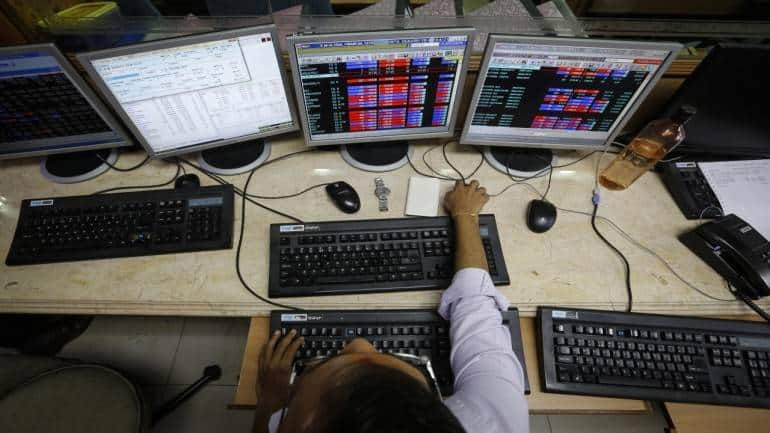How OTM vertical spread can help investors save money in October series
In the case of weekly expiries, if we are mildly bullish or bearish it can be translated into trading action very easily by selling more Calls/ Puts against Calls/Puts bought
SHUBHAM AGARWAL | 06-Oct-19
Reading Time: 3 minutes

Here we will address the burning problem of not-so-speedy time decay due to ‘Long Time’ which is left to expiry as there are many securities that are yet to get into the weekly (more frequent) expiry mode.
Longer expiry period comes in the way of securities where there are only monthly expiry options. First, the problem which traders have to face is of articulating lower conviction.
In the case of weekly expiries, if we are mildly bullish or bearish it can be translated into trading action very easily by selling more Calls/Puts against Calls/Puts bought.
But, faster decaying time value takes care of the fact that in case of an overshooting move in the underlying there is at least an opportunity to get out. Meanwhile, the extra selling of options keeps the cost of the strategy lower as well.
This is not possible with the options that have longer expiry period pending as any move that would come could be more lethal simply because the speed at which the time decay happens in the options at the beginning of the expiry is a fraction of that during the last few days of expiry.
Let us see how to handle this longer time duration of the options.
Typically, keeping a stop loss and adhering to it is a major issue as more often than not the reversal happens right after our stop loss gets triggered.
On the other hand, keeping the option premium as a sunk cost would not be too prudent at the beginning of the expiry either.
The easiest way to deal with this is to create an OTM (Out-of-money) vertical spread. Whereby a two-step out of the money option is bought, Call in case we are calling a bottom and Put if vice versa.
Alongside, just go at least two-three strikes further up in case of Call and further down in case of a Put and sell one lot.
These Call/Put spreads will take care of two things. Options bought and sold will take care of the fact that no matter how long we stay in the trade to a certain extent the time value is being funded.
On the other hand, in case the option premiums were to come down in case of a bottom calling due to reducing riskiness in the market, we are immune due to a spread.
As far as trade is concerned, stay long enough and all we lose is the net premium paid, but in case of a sufficient move up, at times the pay-off could be more than 3 times the premium outflow at stake.
The second situation at the beginning of the expiry is more to trade the capitulation where one has a big move on the screen and looks like the turnaround is expected just tomorrow and with a bang.
The trade is called Back Ratio Spread , where we sell one lot of Call around the bottom or Put around the top of strike nearest to the current market price and Buy two lots of one at the most two-step higher call/lower put.
While the trade keeps the upside wide open at a lower cost, it has to be closed in one -- three sessions, else the time value decay of two lots would come to bite.
On the other hand, if that violent move did come up, the loss on one option sold gets covered by one partially while the other buy starts making money.
In a nutshell, there are ways to keep away from losing a bucket load still be able to take a brave heart call. All you need is the right way of doing it.
These strategies could come in very handy during the times when we have a lot of time in hand for the options to expire.
Learn and read more about volatility from Quantsapp classroom which has been curated for understanding of volatility skew from scratch, to enable option traders grasp the concepts practically and apply them in a data-driven trading approach.
Recent Articles

Best trading strategies for volatile market: Shubham Agarwal!
12-Apr-25

Trade results better with Options: Shubham Agarwal!
05-Apr-25

Top Options strategies for a short trading week: Shubham Agarwal!
29-Mar-25

Buy after a rise confidently with Collar: Shubham Agarwal!
22-Mar-25

Remove uncertainty, trade pure outperformance with long-shorts: Shubham Agarwal!
15-Mar-25

2 factor authentication for intra-day trades: Shubham Agarwal!
08-Mar-25

Three scanners to find potential reversals: Shubham Agarwal
01-Mar-25

Volatility index as stop loss to buy trades: Shubham Agarwal!
15-Feb-25

SHUBHAM AGARWAL is a CEO & Head of Research at Quantsapp Pvt. Ltd. He has been into many major kinds of market research and has been a programmer himself in Tens of programming languages. Earlier to the current position, Shubham has served for Motilal Oswal as Head of Quantitative, Technical & Derivatives Research and as a Technical Analyst at JM Financial.
Recent Articles

Best trading strategies for volatile market: Shubham Agarwal!
12-Apr-25 11:01:00

Trade results better with Options: Shubham Agarwal!
05-Apr-25 09:39:00

Top Options strategies for a short trading week: Shubham Agarwal!
29-Mar-25 14:42:00

Buy after a rise confidently with Collar: Shubham Agarwal!
22-Mar-25 09:57:00

Remove uncertainty, trade pure outperformance with long-shorts: Shubham Agarwal!
15-Mar-25 09:36:00

2 factor authentication for intra-day trades: Shubham Agarwal!
08-Mar-25 08:57:00

Three scanners to find potential reversals: Shubham Agarwal
01-Mar-25 12:41:00











